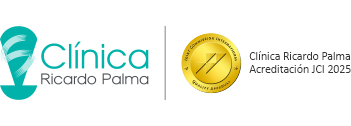×


- (+51) 01 411·4550 / (+51) 01 224·2224
- Av. Javier Prado Este 1066 Urb. Corpac - 15036 Perú
- International Department
-

November 22, 2019
Our liver is one of the most important organs of the digestive system due to the metabolic activity it plays, by producing bile that helps process fats.
It also has the function of metabolizing and storing nutrients and vitamins that are used by our body, avoiding for example hemorrhages through the process called “coagulation” or detoxifying us from harmful substances such as alcohol, drugs and many medicines.
Symptoms
In its early stages, liver cancer does not show symptoms, but over time some symptoms such as fatigue, muscle weakness, decreased appetite, nausea, jaundice or yellowish skin tint, considerable weight loss, generalized pruritus (itching), dark urine or abdominal swelling may appear.
This was announced by Dr. Mauricio León Rivera, Surgical Oncologist of our clinic, who also said that hepatocellular carcinoma, is the most common in this type of cancer which mortality remains very high because it is generally discovered in very advanced stages. In Metropolitan Lima there are 4 cases per 100 thousand healthy inhabitants with this disease.
Risk factors
Among the main risk factors that can influence the development of this disease are hepatitis B and C, cirrhosis, and excessive alcohol consumption.
“Hepatitis B and C, which are transmitted mainly through sexual contact or blood transfusions can become chronic and lead to cancer due to sustained inflammation of the liver”, said the doctor.
Regarding fatty liver – condition called “Nash” (Non-Alcoholic Hepatic Steatosis) – we know that as a result of an abnormal accumulation of certain fats (triglycerides) in the liver cells of the organ becomes inflamed and can develop cirrhosis and then cancer.
For the diagnosis of liver cancer, abdominal ultrasound is used identifying liver damage. The abdominal tomography or magnetic resonance imaging also evaluates the presence of intra-abdominal nodes and the invasion of the tumor into vascular structures to plan the corresponding surgical procedure.
Prevention
Dr. León said the most important preventive guideline is to get vaccinated against hepatitis B, detect and treat hepatitis C, limit alcohol consumption and modify lifestyles such as doing more exercise and eating a healthy diet. In addition, it is recommended that patients with cirrhosis and/or hepatitis B have a check that includes an abdominal ultrasound every six months.
Dr. Mauricio León
Surgical Oncologist at Clínica Ricardo Palma